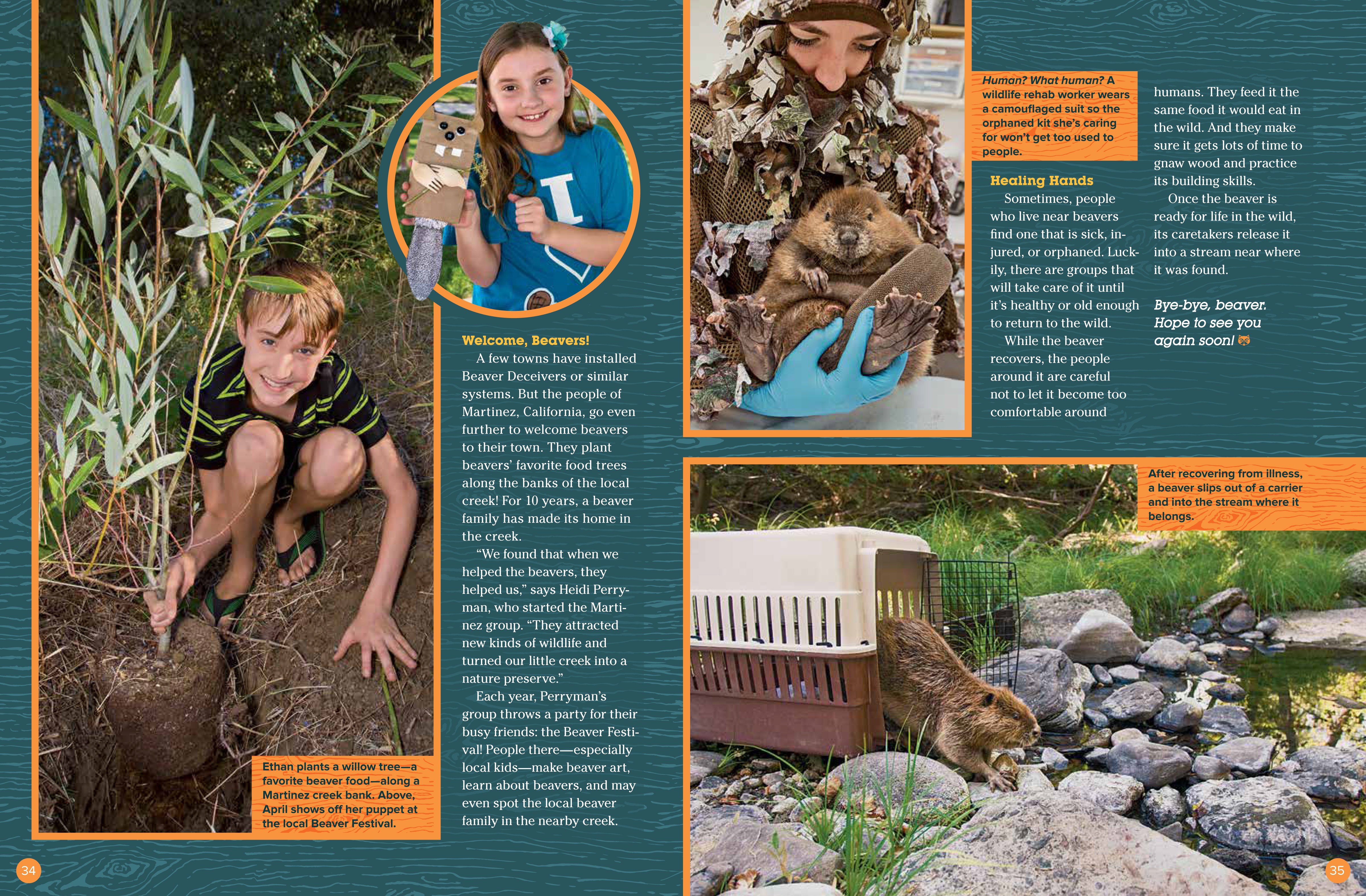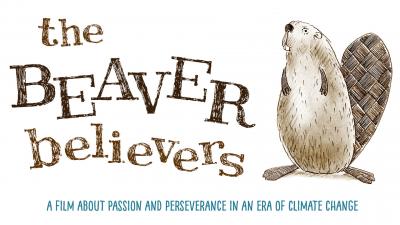It finally happened. After 11 years and ten festivals the Martinez beavers just went national.
Guess what was delivered to children all across the United States and beyond yesterday? The May issue of Ranger Rick in which our beavers are a major story. The entire issue is online as well here.
Leave it to Beavers
Believe it or not, many people think beavers, especially the ones that live in cities or towns, are pests.
That’s because beavers can make big changes to the places they live. For one thing, they cut down trees. They eat the leaves and tender twigs. And they use the trunks and branches to build dams that block the flow of water in rivers and streams. Those dams form ponds where beaver families can live safely in their lodges—partly underwater dens built of rocks, sticks, and mud.
Unfortunately, a beaver dam may cause the water to rise so high that it floods nearby streets. So for many years, people tried to keep beavers out of their towns and away from their homes.
But now, some people are working to make sure beavers can live happily in their communities. Turn the page to learn more about North America’s largest rodent— including why it makes a great neighbor!
That would be us.

Robin was quick to spot the little curly tailed kits of Tulocay creek.
Good Neighbors
Eventually, scientists started to realize that beavers and their dams actually keep waterways healthy. Dams help prevent the soil around creeks from eroding, or crumbling. The pools created by dams make great homes for fish, birds, and other wildlife. And the dams help filter pollution out of the water.
So some people decided to figure out ways to live side by side with beavers. They discovered they could protect certain trees by wrapping them with wire or painting them with a rough, sandy mixture. (Beavers don’t like the feeling of sand on their teeth, so they move on to other trees.) And they invented a device sometimes called a “Beaver Deceiver.” When the water level in a beaver pond gets too high, this special pipe lets some water flow back out into the creek. That way, the beavers get a lodge that is safely surrounded by water— and the nearby streets and buildings stay nice and dry.

A few towns have installed Beaver Deceivers or similar systems. But the people of Martinez, California, go even further to welcome beavers to their town. They plant beavers’ favorite food trees along the banks of the local creek! For 10 years, a beaver family has made its home in the creek.
“We found that when we helped the beavers, they helped us,” says Heidi Perryman, who started the Martinez group. “They attracted new kinds of wildlife and turned our little creek into a nature preserve.”
Each year, Perryman’s group throws a party for their busy friends: the Beaver Festival! People there—especially local kids—make beaver art, learn about beavers, and may even spot the local beaver family in the nearby creek.
Ahh this feels so right! Thank you Ranger Rick for making our town sound like they welcomed beavers with open arms instead of with clenched teeth. It’s a great article too, author Hanna Schardt let me check the copy back in winter and I was impressed with her cheerful child-proof accuracy. I won’t even sigh wistfully about what the fact that Worth A Dam doesn’t get mentioned (because its a bad word) and we lost our 8-page cover story status when our beaver kits all died that year. Now the cover belongs to some lucky zebras and we don’t even get a link to the website. (Sigh)
But still, many many families will learn that this can be done differently, and we get to keep Suzi’s awesome photos forever. So I think we’re pretty ‘dam’ lucky.






 Before people dismiss Doyon as a location for one new school, I wish to present some facts that everyone should carefully consider. First, it’s the open space. For a town that values open space, what is better than having over 17 acres for the children of Ipswich?
Before people dismiss Doyon as a location for one new school, I wish to present some facts that everyone should carefully consider. First, it’s the open space. For a town that values open space, what is better than having over 17 acres for the children of Ipswich?

 Wow what a day. Tonight is the PREMIERE of the beaver believer film at the wildlife film festival in Missoula Montana. I heard from Sarah Koenisberg yesterday confirming how I wanted my name in the credits. She was so excited it was all finished and 71 minutes long. I can’t wait to hear about it, and hope I’ll eventually be able to share it here.
Wow what a day. Tonight is the PREMIERE of the beaver believer film at the wildlife film festival in Missoula Montana. I heard from Sarah Koenisberg yesterday confirming how I wanted my name in the credits. She was so excited it was all finished and 71 minutes long. I can’t wait to hear about it, and hope I’ll eventually be able to share it here. “In this location we removed invasive nonnative plant species like bush honeysuckle and Japanese knotweed. We planted native species. Part of the project is beautification, but also to introduce native species to improve the habitat for animals. I didn’t think we’d be quite this successful in improving the habitat for beavers.”
“In this location we removed invasive nonnative plant species like bush honeysuckle and Japanese knotweed. We planted native species. Part of the project is beautification, but also to introduce native species to improve the habitat for animals. I didn’t think we’d be quite this successful in improving the habitat for beavers.”







































